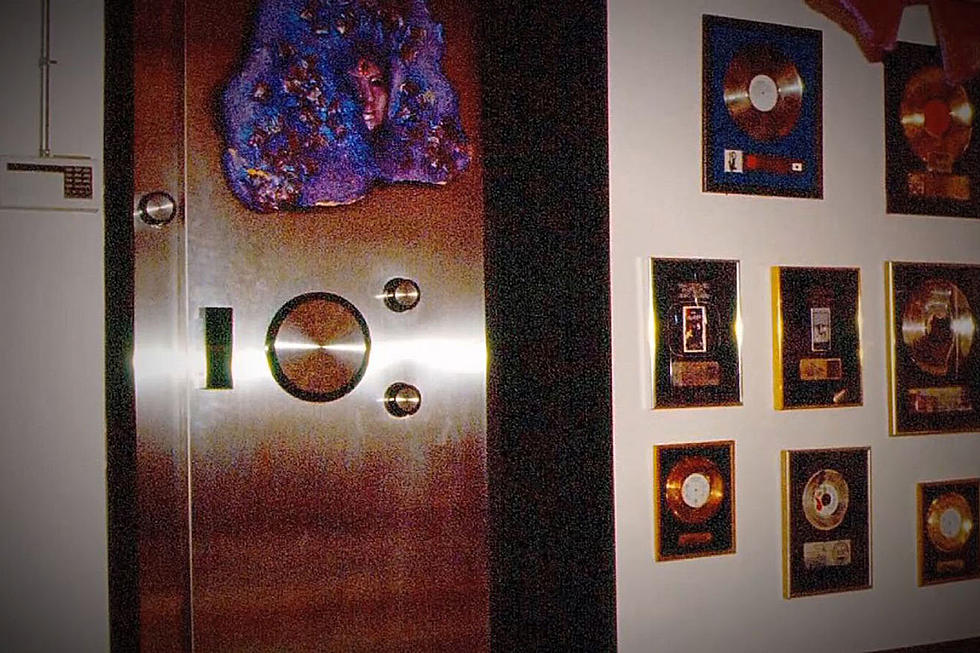
30 Years Ago: Prince Transcends Boundaries With ‘Sign ‘O’ the Times’
Prince always had an eclectic streak, but he really gave in to his creative wanderlust during the years immediately following his massive breakthrough with Purple Rain, indulging in pop psychedelia with Around the World in a Day and Eurofunk with Parade. But both of those follow-ups just traced the outlines of the boundaries he'd stretch with his next release, Sign 'O' the Times.
Released March 31, 1987, the sprawling double-record set arrived a year to the day after Parade — but even with its short gestation time, the project had a remarkably complicated history. Many of the songs had their genesis in a series of 1986 sessions with Prince's former band the Revolution, and were earmarked for a two-LP release titled Dream Factory; after the members of the Revolution were dismissed following Prince's 1986 tour, he wandered off on a tangent, experimenting with sped-up vocals and recording an album's worth of work in the guise of a female alter ego dubbed Camille. After second-guessing his decision to release that album, he decided to mash everything together into a triple-LP set titled Crystal Ball that was ultimately rejected by the label on account of length — all in the span of several months.
"As an artist, the first record you ever make is just a point and anything after that is a direction, so follow-up records build on what came before. But the interesting thing is when you have a massive hit record you get to start over," Prince's longtime engineer Susan Rogers later said of the period following Purple Rain. "This is what artists do. So when you have a record that totally says you’ve arrived, after you arrive, you get to start a new journey."
Unfortunately, as is often the case with creative journeys, certain sacrifices had to be made along the way — and for Prince fans, the breakup of the Revolution proved a particularly unpleasant surprise. Always determined to follow his own path, Prince had proven himself stubbornly willing to burn bridges before, but the Revolution seemed to be taking on a greater presence in his music during the years leading up to their dismissal — especially keyboardist Lisa Coleman and guitarist Wendy Melvoin, who worked with him particularly closely and were wounded by the breakup.
"It became this triumvirate, a three-headed monster. And that was the main reason why he let us go. He wanted to express himself completely," Melvoin later argued. "We were doing so much work. That’s the way I rationalize it now. Prince may have other reasons why he let us go. He’s never really talked about that. But we were led to believe that he needed to get back his mojo."
Whether Prince accomplished that goal with Sign 'O' the Times is up to the individual listener, but there's no arguing the end results were — and remain — some of his most critically acclaimed work. And it isn't hard to hear why: with a restlessness impressive even for Prince, the record hopscotches across styles throughout its 16 songs, moving from the sparse synth funk of the title track to the pop energy of "Play in the Sunshine" to the dance grooves of "Housequake" and quietly moody "The Ballad of Dorothy Parker"...all over the course of Side One.
That frantic yet assured eclecticism was emblematic of Prince's creative pace at the time. As manager Gilbert Davison later claimed, half of the album was actually written over the course of a single flight, during which Prince scribbled lyrics on notepads while making plans to head to the studio immediately after landing.
"We go to the studio. We were in there for three days, almost four days straight," Davison recalled. "When he's finished, I go into the studio and I'm listening to the music. I asked him on the way home: 'Did you have all that in your head? Not just the lyrics, not just the music, not just the melodies, but the arrangement, everything?' And he said, "Yeah, you know, I have to get it out when it's in there, or I can't sleep.' He had written [the first two album sides of] Sign 'O' the Times. He had basically written an album in a three-and-a half-hour plane ride."
If Sign 'O' the Times' sales couldn't quite match Purple Rain's — or those of its immediate successors — it still added another solid entry to Prince's growing list of hits, peaking at No. 6, going platinum, and sending a trio of songs ("U Got the Look," "I Could Never Take the Place of Your Man," and the title track) into the pop Top 10. A fourth single, "If I Was Your Girlfriend," may have been a little too gender-ambiguous for rock audiences, but it still managed to break the Top 15 at R&B.
All told, the album marked the beginning of one era — Prince's post-Revolution period — and the end of another. His creative spirit arguably never wandered as freely within an album as it did with Sign 'O' the Times; the following year, he'd infamously yank his planned The Black Album project, substituting the hastily recorded Lovesexy in its stead, and he'd close out the '80s with a chart-topping soundtrack for Tim Burton's Batman. The subsequent decade had its share of highlights, but it was arguably defined by Prince's high-profile battle with Warner Bros., his adoption of an unpronounceable androgynous hieroglyph for a name, and a rapid-fire series of increasingly uneven efforts.
New material, songs scooped from the ashes of recently abandoned albums, even a couple cuts from the archives ("Strange Relationship" and "I Could Never Take the Place of Your Man," both recorded early in the decade) — Sign 'O' the Times gathered them all into a whole that was consistent without ever being quite cohesive. Having transcended commonly accepted racial and genre boundaries, Prince was caught between divergent audiences, each of which demanded more of their particular version of who he was as an artist; ever the iconoclast, he insisted on doing it all — and doing most of it better than anyone else.
Prince Albums Ranked
More From Y105










